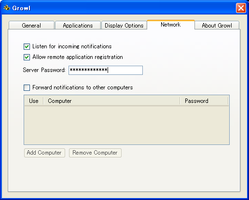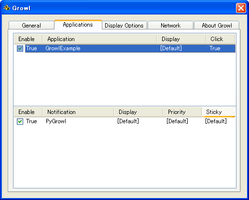『オレ、rel-bookmarkも嫌いなんだわー』とブツクサ言うsnj14 - otsune tumblr まとめサイト 画像保管庫Qさて、私も少し考えてみた。
『オレ、rel-bookmarkも嫌いなんだわー』とブツクサ言うsnj14 - otsune tumblr まとめサイト 画像保管庫Q(追記)
3:14 - 『オレ、rel-bookmarkも嫌いなんだわー』とブツクサ言うsnj14
Basic HTML data typesmattn的に訳すと
Refers to a bookmark. A bookmark is a link to a key entry point within an extended document. The title attribute may be used, for example, to label the bookmark. Note that several bookmarks may be defined in each document.
http://www.w3.org/TR/REC-html40/types.html#h-6.12
そしてkuさんが言及している部分Bookmarkについて。 bookmarkは広範囲に渡るドキュメント内の唯一のキーとなるエントリポイントへのリンクとなります。ブックマークをラベリングする際にはタイトル属性が使用され、ドキュメント内には幾らかのブックマークが定義され得る事に気をつけるべきでしょう。
Basic HTML data types訳すと
Authors may wish to define additional link types not described in this specification. If they do so, they should use a profile to cite the conventions used to define the link types. Please see the profile attribute of the HEAD element for more details.
http://www.w3.org/TR/REC-html40/types.html#h-6.12
作者は本仕様では記述し得ないリンク型を別途定義したいと思うかもしれません。 であれば、リンク型を定義するのに一般的に用いられるprofileを使用すべきでしょう。 その他の詳細に関してはHEAD要素のprofile属性を参照して下さい。そしてrel-bookmarkについて、microformats wikiでは
rel-design-pattern - Microformats訳すと
By convention (citation needed), this entry point also captures the notion of a "permalink".
http://microformats.org/wiki/rel-bookmark
意訳過ぎたらごめんなさい一般的には(言及が必要)、このエントリポイントとはpermalinkの概念で表現される物。
と言う事で
rel-bookmarkとは、それが含まれるドキュメントの内1点を指すべき物であり、rel-bookmarkがドキュメント内で実際のリンク先を指すべき、とまでは決めてない。あくまでpermalink扱い。
例えば末っ子の小学生が「姉ちゃん」と言えば「姉」を指し、60代サラリーマンが「姉ちゃん」と言えば「キャバクラの姉ちゃん」になる訳で...
つまりはそのテリトリ内で一意に現すことが出来る何か...がrel-bookmarkなのではないかと思った。








